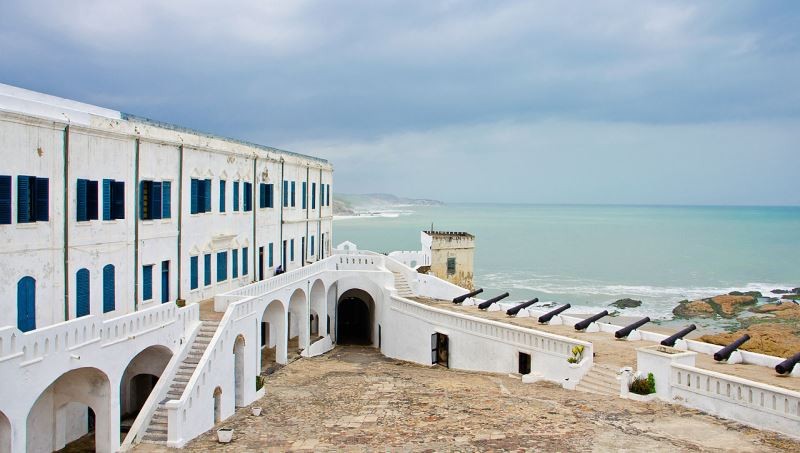Tour Details
Cape Coast Castle Tour: A Journey Through History
Cape Coast Castle, located in the vibrant coastal town of Cape Coast in Ghana, is one of the most significant historical landmarks in West Africa. It holds deep connections to the transatlantic slave trade and is a UNESCO World Heritage site. A visit to this castle offers a poignant, reflective experience, providing insight into Ghana’s history and the resilience of those affected by the slave trade.
Tour Highlights
- Castle’s Historical Significance
Cape Coast Castle was once a major center for the British slave trade. It served as a holding point for enslaved Africans before being shipped to the Americas. The castle’s dark and eerie dungeons stand as a stark reminder of this painful history. - The Dungeons
Explore the castle’s dungeons where enslaved people were kept in horrific conditions. Walk through the narrow, dark corridors and hear the haunting stories of the men, women, and children who passed through these walls. - The Door of No Return
Stand at the “Door of No Return” – the point from where slaves were shipped out to the Americas. This solemn and symbolic location marks the final step for millions of enslaved Africans, never to return to their homeland. - Cape Coast Castle Museum
The museum within the castle showcases a comprehensive collection of artifacts, documents, and photographs related to the history of the castle, the transatlantic slave trade, and the eventual abolition of slavery. - The Governor’s Quarters
Visit the well-preserved Governor’s Quarters, which offer a stark contrast to the brutal conditions of the dungeons. Learn about the British colonial history and the administration of the castle during the slave trade era. - The Castle’s Architecture
Admire the castle’s grand architecture, which blends European and African influences. The castle features high walls, turrets, and beautiful views of the Atlantic Ocean, making it a stunning example of colonial fortifications. - Panoramic Views
From the castle’s upper balconies, take in the panoramic views of the Atlantic Ocean and the surrounding coastal town of Cape Coast. The juxtaposition of the beautiful landscape with the grim history creates a powerful emotional experience. - Guided Tours and Personal Stories
Engage in a guided tour with knowledgeable local guides, many of whom are descendants of people affected by the slave trade. Their personal stories and insights provide a deeper, more human connection to the historical events. - Legacy and Reflection
The Cape Coast Castle is a place for reflection, education, and healing. It serves as a reminder of the atrocities of the slave trade while celebrating the resilience and strength of the African diaspora. - Nearby Attractions
While in Cape Coast, consider visiting other historical sites such as Elmina Castle, Kakum National Park (with its famous canopy walkway), and the Cape Coast Central Market.
Best Time to Visit
- Dry Season (November to March): The dry season offers the best weather for exploring outdoor historical sites and enjoying the scenic views of the castle.
- Rainy Season (April to October): Though the weather can be rainy, the lush surroundings during this time offer a different, more serene atmosphere.
Why Visit Cape Coast Castle?
Cape Coast Castle is a powerful symbol of Africa’s history and resilience. A visit to this site is not just about learning the facts; it’s an emotional and educational experience that connects past struggles to present-day reflections on human rights, freedom, and justice.
Embark on a journey through history, and experience the profound significance of Cape Coast Castle, where memory, history, and culture converge in a meaningful way.













